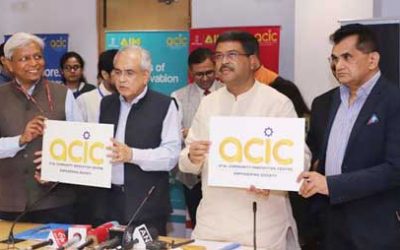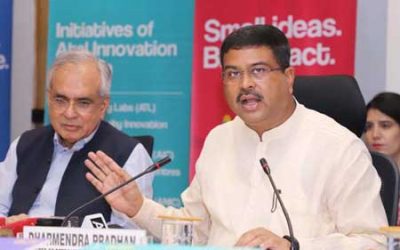To promote AI-led innovation in the country, the National Association of Software and Services Companies (NASSCOM) has unveiled a new program, AI Gamechangers, in partnership with Microsoft. The program has been launched to recognize impactful and scalable AI-based innovation in the country.
According to the official release, NASSCOM and Microsoft will work jointly to develop and promote the AI Gamechangers program to spearhead AI’s adoption across all sectors. As part of the program, NASSCOM will recognize the country’s top AI innovators at its Xperience AI Summit, one of India’s largest AI Summits.
The program will enable organizations, academia, and NGOs to demonstrate their AI-based products and solutions to give further fillip to AI-innovation in the country.
A selected panel of jury will evaluate the program entries on problem selection, solution innovation, and impact parameters. Participants can submit their entries between 4 March 2021 to 16 April 2021 here.
Boost to homegrown AI innovation
The role of AI innovations has grown across all industries in recent years. Most businesses rely heavily on the Cloud, having an opportunity to collect tons of structured and unstructured data. By leveraging this data, AI can make processes more intelligent and enable enterprises to perform increasingly complex tasks effortlessly.
“The past decades have seen a dramatic growth of innovation and talent in India. While the country continues to leap forward to become the global innovation hub, we expect AI to unlock $500 Bn of value to India’s GDP by 2025. Through this program, we aim to spotlight some of the leading AI-based innovations in the country, not only to recognize their efforts but to motivate the larger ecosystem to leverage this opportunity to help India become a global powerhouse in AI-led innovation,” said Debjani Ghosh, President, NASSCOM in an official release announcing AI Gamechangers launch. (See: Enterprises in India leading AI adoption globally)
The actionable intelligence provided by deep learning algorithms and metrics helps businesses and governments navigate the uncertainties, make more informed decisions and even anticipate customer preferences accurately. AI innovations have disrupted industries of all sectors – be it retail, manufacturing, IT, banking, or healthcare. (See: AI tools can drive significant efficiencies in oil and gas, AI in banking now geared for a takeoff and How artificial intelligence is transforming the Indian retail sector)
For instance, in healthcare, AI innovations have been leveraged to address patient’s queries, find prevention and early detection solutions to various human diseases, including the current COVID-19 pandemic.
The Indian Council of Medical Research (ICMR) recently deployed interactive AI-based chatbots to respond to the detailed queries of frontline staff and data operators of testing and diagnostic labs on COVID-19. Many leading Indian medical practitioners are using AI to detect early signs of lethal diseases such as Cancer.
Requires collaborative approach
Today, there are several use-case studies where AI-based solutions have been leveraged to solve challenges such as water crisis, food shortage, flood relief, pest control. There are many more in the experimenting phase and are expected to make an impact in the future. With the inevitable launch of 5G, enterprises are expected to utilize AI-based innovations to make their processes more intelligent, launching voice-based solutions for real-time customer support and bettering their market behavior. (See: India gears up for AI leap in post-Covid-19 era)
“Cloud-led data and AI innovation offer a huge canvas for India to be the tech engine of the world and drive homegrown innovation. Data and AI are driving transformation at scale across industries and offer an incredible opportunity to transform public infrastructure and solve some of the most critical issues facing the country today,” said Anant Maheshwari, President – Microsoft India.
However, the homegrown innovations around AI can be accomplished only through a robust collaborative approach and all stakeholders’ participation. AI-innovations still need considerable research and efforts to mitigate challenges such as data quality, inexperienced staff, and limited prototypes locally.
Efforts like AI Gamechangers need to be supported with more funding opportunities from the central and state governments to promote and expand the local AI-related advancements.

















0 Comments